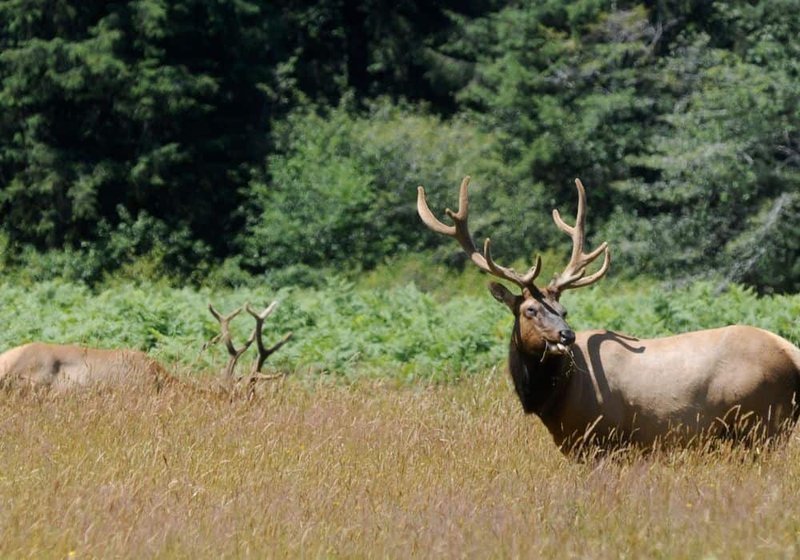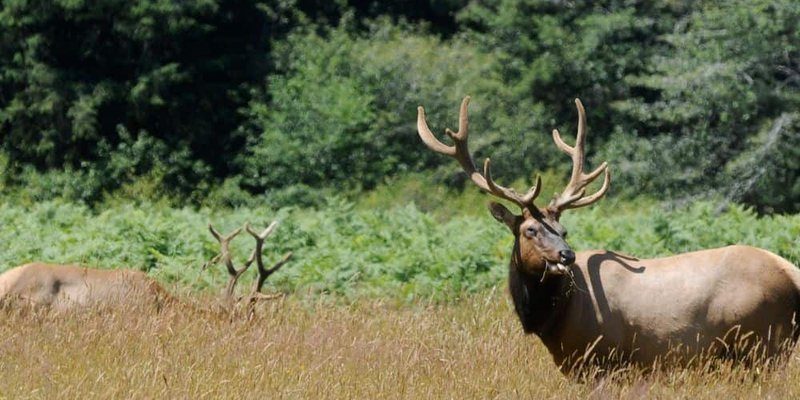
Elks are more than just a pretty sight in the wild. They play a vital role in their ecosystems, just like a chef adds essential flavors to a dish. Knowing about their habitats helps us appreciate their contribution to biodiversity and the importance of protecting their environments. So, grab that latte, and let’s break down where elks live and what makes their homes special.
Understanding Elk Habitat
Elk thrive in a variety of habitats, but they typically prefer regions where they can find plenty of food, cover, and space to roam. They are often found in forests, grasslands, and mountainous areas. Their habitats provide the right combination of shelter from predators and abundant forage—everything from grasses to shrubs and bark.
During the summer months, elks often migrate to higher elevations with cooler temperatures and lush vegetation. Think of it like a vacation! They move to mountain meadows and alpine regions that offer rich food sources and plenty of space for their herds. In winter, they typically descend to lower elevations, where they can find sustenance in the snow-covered landscape.
Here’s a breakdown of their key habitat features:
- Food Sources: Elks are herbivores, so they need habitats rich in plants, herbs, and trees.
- Water Access: Proximity to rivers and lakes is crucial for hydration.
- Cover: Dense forests provide protection from harsh weather and predators.
- Space: Elks are social animals that thrive in large herds, requiring vast areas to roam.
Where Can You Find Elks? Geographic Distribution
Elk are native to North America and can be found in a variety of regions across the continent. Their distribution ranges from the Canadian provinces down through the United States. You’re likely to see them in states like Montana, Colorado, Wyoming, and even parts of California.
Interestingly, elk were once widespread across much of the eastern United States but faced significant population declines due to overhunting and habitat loss. However, conservation efforts have helped them bounce back in certain areas.
Here’s a quick look at some of the major regions where elks are commonly spotted:
- The Rocky Mountains: A prime habitat with plenty of food and space.
- The Pacific Northwest: Dense forests and moist climates are perfect for elks.
- The Midwest: Restoration efforts have led to elk reintroduction in certain states like Kentucky.
- Eastern US: Elks have been re-established in areas like Pennsylvania and Virginia.
Seasonal Migration Patterns
If there’s one thing you should know about elks, it’s that they’re expert migrators! Just like some people love to take seasonal trips to warmer destinations, elks migrate between summer and winter habitats. This movement is critical for their survival and is often driven by seasonal changes in food availability.
In the summer, elks head to higher elevations, where the snow melts first, revealing nutritious grasses and tender shoots. You might picture them basking in sunny meadows, grazing with their herd. But as the temperatures drop and snow blankets the ground, they follow the food supply down to lower elevations.
Their migration routes can range from a few miles to over a hundred, depending on the region. This seasonal dance not only helps them find food but also allows them to avoid harsh winter weather. It’s an intriguing aspect of their life that showcases their adaptability and instinct.
Elk Habitats Around the World
While North America hosts the majority of elk populations, they aren’t limited to just this continent. In fact, elk have relatives and similar species found in other parts of the world. For instance, the Moose, which is a close cousin to the elk, is found in northern regions across Europe and North America.
Another noteworthy mention is the Sika Deer, which shares some similarities with elk and can be found in Asia. While they might not roam the vast meadows of North America, they still play important roles in their respective ecosystems.
Understanding these global habitats can help us appreciate biodiversity and highlight the importance of conservation efforts on a larger scale.
The Importance of Habitat Conservation
Protecting elk habitats is not just vital for the elk themselves but for the entire ecosystem. Elk play a significant role in maintaining the health of their environment by grazing on vegetation and helping to keep plant communities diverse. Their movement patterns also help disperse seeds and nutrients, which supports other wildlife.
Unfortunately, urban development, climate change, and poaching threaten these habitats. It’s crucial for conservationists, wildlife enthusiasts, and local communities to work together to maintain these spaces for elks and other wildlife.
Supporting local conservation efforts, promoting sustainable tourism, and educating others about the need to protect these ecosystems can make a big difference. It’s like knitting a safety net—one strand at a time, the community can help preserve these beautiful habitats.
Final Thoughts: Celebrating Elks and Their Homes
So, where do elks live? They inhabit diverse environments across North America, from lush forests to open grasslands, and even mountains. Their seasonal migrations enable them to adapt to changing conditions and find food throughout the year. Understanding their distribution and habitat needs is essential for appreciating these splendid animals and the vital roles they play in our ecosystems.
As we wrap up our chat, it’s clear that elk are more than mere wildlife; they’re an integral part of the natural world that deserves our admiration and protection. By keeping their habitats safe, we ensure that future generations can enjoy seeing these magnificent animals in the wild. So let’s raise our cups to the elk and the beautiful places they call home!

